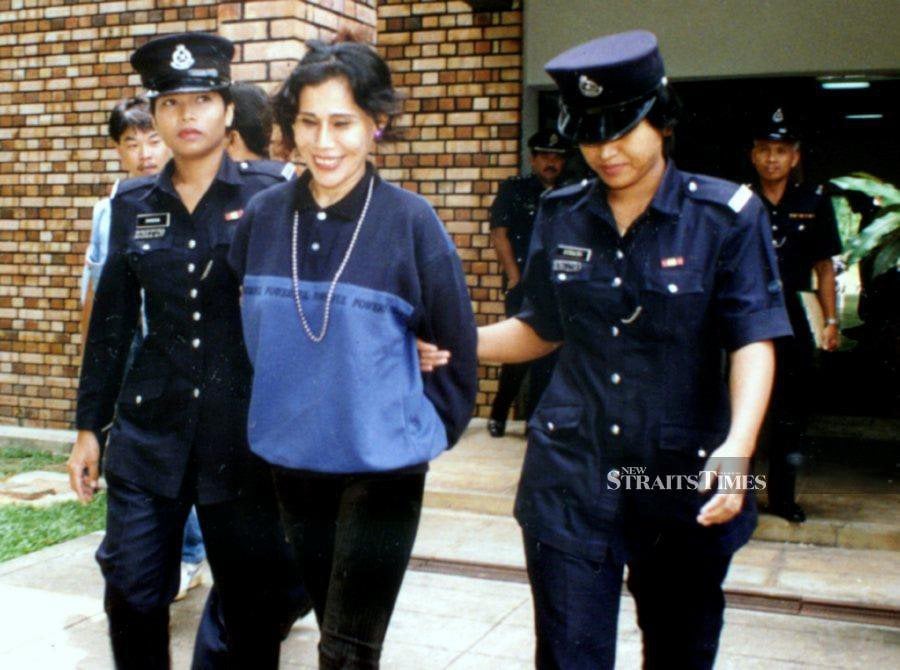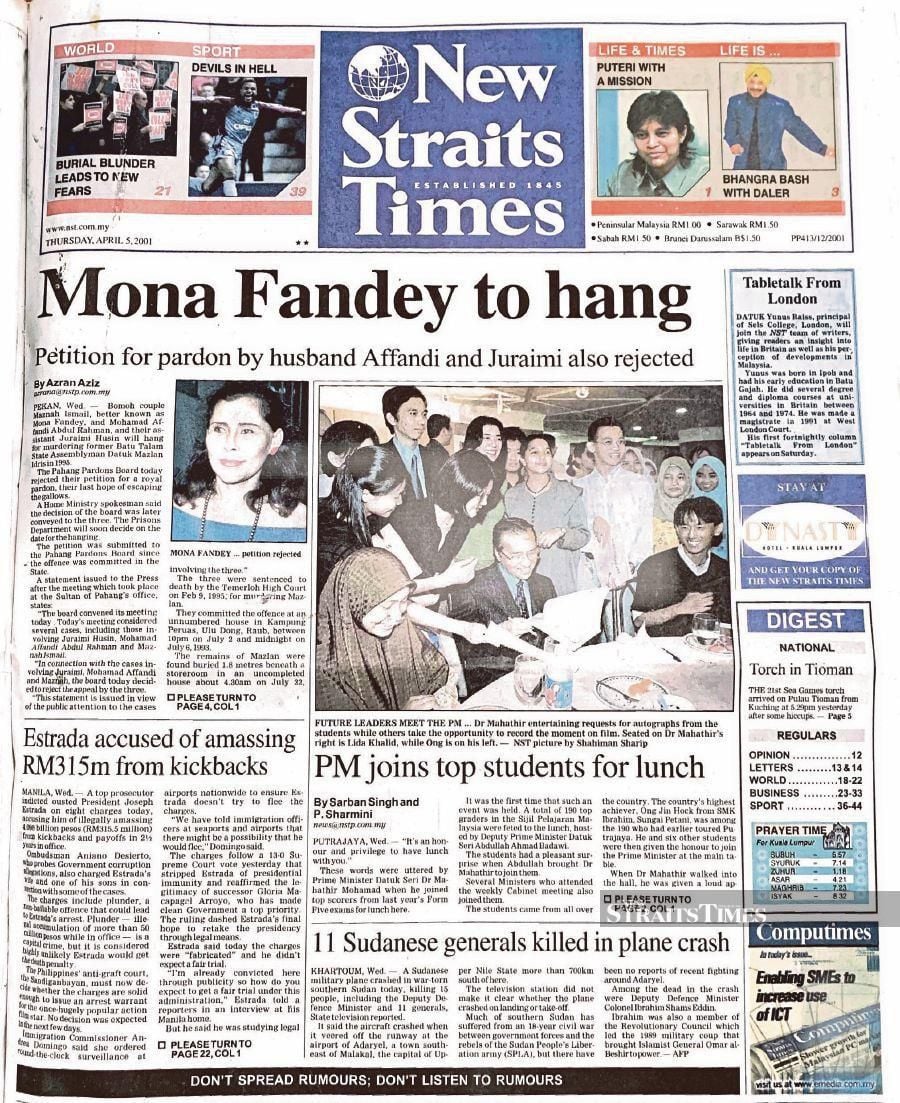The gruesome tale of Mona Fandey
 |
Maznah Ismail alias Mona Fandey being escorted by police officers in Kuala Lumpur. FILE PIX |
His disappearance, initially thought by family and colleagues as being "incommunicado", hogged media headlines for weeks. The New Straits Times, especially, carried extensive reports on the incident from the day his body (in 18 parts) was discovered until the day his murderers were sentenced to death by hanging on Nov 2, 2001, at Kajang Prison.
The 'ritual' killing of Mazlan, 49, was intriguing, to say the least. It had the makings of a Hollywood murder movie — fame, power and witchcraft, elements that were believed to play a role in his death.
The story: Mazlan's murder was orchestrated by former pop-singer turned bomoh Maznah Ismail alias Mona Fandey and her husband, Nor Affendy Abdul Rahman, and helped by their assistant Juraimi Husin.
 |
Nor Affendy Abdul Rahman (left) and Juraimi Husin |
According to reports, Mona and Affendy hatched a plan to kill Mazlan as revenge over a land deal that had gone sour. They had promised Mazlan that they could make him invincible and had invited him over to their home for a "cleansing" ritual.
Instead of the ritual, Mazlan was murdered. His body was dismembered into 18 parts and buried in an uncompleted house on a property owned by Mazlan in Kampung Lata Jarum, Hulu Dong, in Raub, Pahang. Some reports said Mazlan's body had been "partially skinned".
On July 22, 1993, the then Federal Criminal Investigation Department director Datuk Zaman Khan had led a search operation, which made the gruesome discovery of Mazlan's dismembered body, buried six feet deep in a pit covered with cement.
Police also found an altar and statues of deities, as well as knives and an axe at the scene. Furthermore, a .38 Smith and Wesson revolver, which belonged to Mazlan, was found buried in the area.
Mona, Affendy, Juraimi and two others were subsequently detained in Bentong and Kuala Lumpur.
 |
The front-page of the ‘New Straits Times’ featuring a story on Mona Fandey |
Police investigations showed that about RM315,000 had been withdrawn from Mazlan's account in Kuantan and Kuala Lumpur, and it was believed to have been taken by one of the suspects who had bought and paid cash for a Mercedes-Benz 280S.
On Aug 3 the same year, Mona, Affendy, and Juraimi were charged in the Raub magistrate's court with the murder of Mazlan. They pleaded not guilty. They were tried at the Temerloh High Court by a seven-person jury.
A total of 70 witnesses were called and 295 exhibits tendered. The court found them guilty and sentenced them to death by hanging.
The trio filed appeals to the Federal Court but in 1999, the court dismissed them and upheld the death sentence.
The trial was one of the last jury trials to be conducted in Malaysia.
All trials by jury were abolished on Jan 1, 1995.
 |
Policemen looking for evidence in the murder of Batu Talam (Pahang) state assemblyman Datuk Mazlan Idris in Kampung Lata Jarum, Hulu Dong, in Raub, Pahang, on July 22, 1993 |
One of the most chilling confessions made by Juraimi in court was, "I chopped his neck three times to separate the head from the body. I also cut Mazlan's body into pieces before burying his remains".
In 2018, a Malaysia horror film titled Dukun, directed by award-winning filmmaker Dain Iskandar Said, was released. Its lead character, played by Datin Seri Umie Aida, was said to have been inspired by Mona Fandey.
Her spectre has been reported seen many times.. that kind of death curse usually means she will likely wander the earth for eternity.. wakakaka....
ReplyDeletethankfully mona gang never assert they did all this for the sake of race n religion.
ReplyDelete